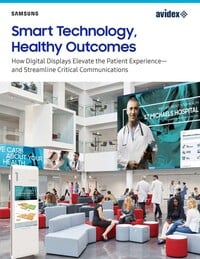The NEC WT600 projector's groundbreaking short throw has brought a new kind of immersive museum exhibit to life.
A group of UCLA artists and researchers were collaborating on an exhibit called Ecce Homology, which would use dynamic media, computer vision and computer graphics to create a unique hybrid of art and science. The exhibit site was a long, narrow space in the Fowler Museum of Cultural History. The intent was to let visitors discover evolutionary relationships between human beings and other organisms through interaction with a 45-foot long, 12-foot high projection.
A custom computer vision system would track visitors’ movements and create light-filled traces into the projection, allowing visitors to interact with the projections while standing anywhere from a few inches to several feet from the projection surface. Thus visitors would have a visceral, aesthetically pleasing, immersive experience with the projections. On their way out of the space, visitors would learn that they had in fact conducted and experiment finding the genetic similarities between a rice seedling and the human genome, and triggered the process through their own through their movement in the space. So they would have an aesthetic experience first, only to later learn that the experience was actually related to the latest advances in genetic science.
To accomplish this, the exhibit creators sought a display technology that would enable large projected images, a difficult task given the narrow space. To create an immersive experience they also needed to project the images in a way that would allow visitors to walk through the space without obscuring the projections. A typical front projector would not be feasible due to the throw distance required and due to the fact that visitors’ shadows would get in the way of the light path.
Click here for the full case study
Click here for the case study in pdf



